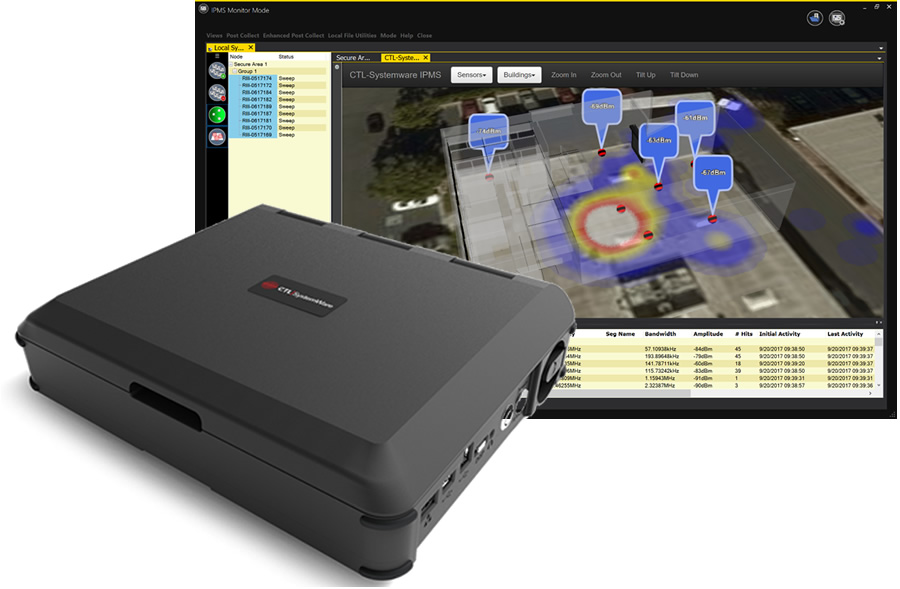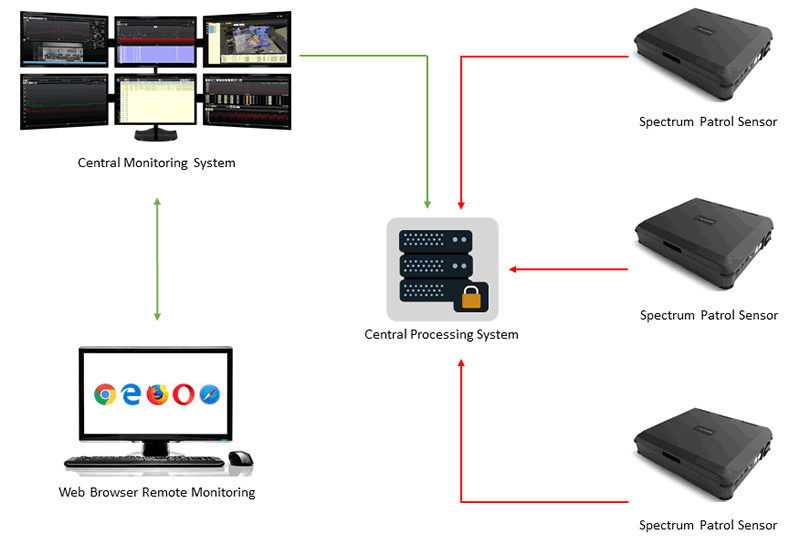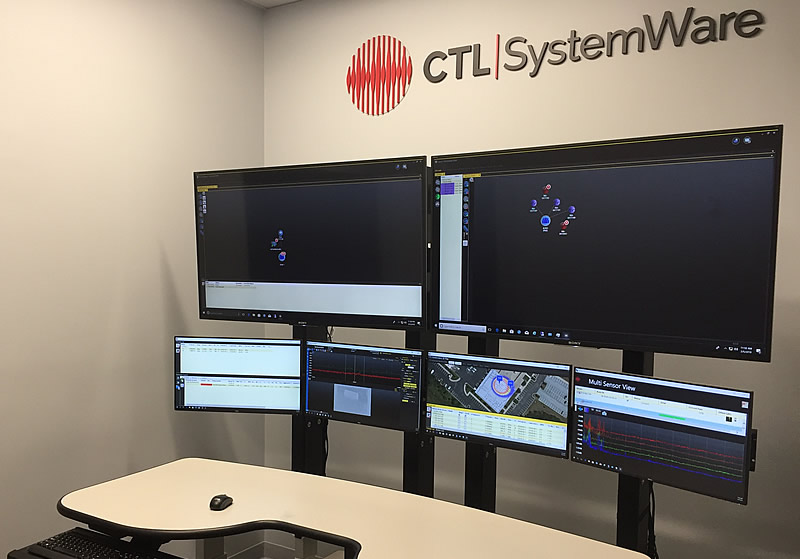In-Place-Monitoring-System
Scalable RF Collection and Analysis
Locates and Classifies Threats

The CTL|SystemWare Spectrum Patrol In-Place-Monitoring-System (IPMS) offers the ability to identify internal and external radio frequency (RF) threats, while allowing for differentiation between authorized and unauthorized Personal Electronic Devices operating on common cellular or Industrial, Scientific, and Medical (ISM) radio frequencies. The Spectrum Patrol is comprised of a collection of sensors at a single site, scalable to cover multiple sites with distinct protected areas. The Spectrum Patrol also allows users to complement its capabilities by incorporating additional CTL|SystemWare sensors such as the Raider III, Network Guard and DoubleShot.
Wireless Collection and Analysis:
- Wi-Fi Mac Address
- Bluetooth Mac Address
- SSID Detection
- Signal Strength
- Hardware Manufacturer
- Wi-Fi Protocol Detection
- ZigBee Node Addresses
- Packet Identification and Analysis
- Mac Address Registration
- Authorized vs. Unauthorized List
Software Functions:
- Threat Localization
- Sweep RF Spectrum with User-Defined Frequency Parameters
- Real-Time Signal Analysis
- Frequency (Channel) Scan
- Multiple Visual Representations of the RF Spectrum
- 2D Display, Waterfall Display, and Display Zooming Feature
- Signal of Interest Frequency List
- One-Button or Automatic Audio Recording
- Classification of Common Digital and Analog Signals
- Video Recreation (NTSC/PAL)
- Post Collection Data Analysis Tools
- Colored Raster
- Consolidated Exceedance List

Spectrum Patrol provides low-level processing, localization through sensor saturation, and the plotting of estimated emitter locations via a 3-D display of the protected area on a Central Monitoring System (CMS). Individual sensors collect, plot and save spectral RF data to networked, internal, or external storage. The sensors compare live data to a dynamic reference file combined with signal source localization to determine alarms. Once a sensor detects an alarm condition, an on-site Central Processing System (CPS) takes readings from all sensors, detecting the potential threat signal. The location data, utilizing GPS if available, of the sensor and signal strength at each point are fed to a localization algorithm which estimates the area location of the transmission source and plots it on a 3D facility display. Once a threat is localized, the nearest sensor provides basic interactive analysis for signal classification, operator examination, and threat determination.

The Central Monitoring System displays the Spectrum Patrol Software, and features the ability to operate a multi-display setup showing simultaneous results of Spectrum Patrol’s multiple capabilities.